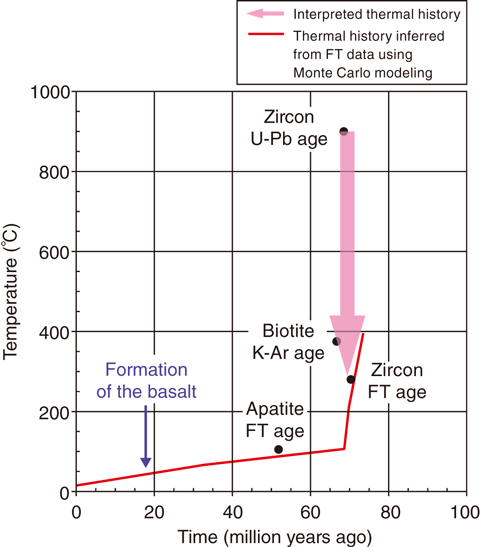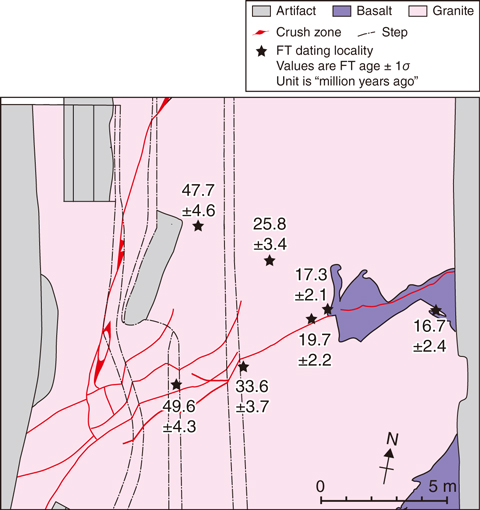
Fig.7-11 Thermal history of granite in the Tsuruga region

Fig.7-12 FT ages around crush zones of the “MONJU” site
We have investigated the activity of crush zones distributed in and around the “MONJU”-prototype fast-breeder reactor site by following the guidelines and instructions of the Nuclear Regulation Authority (NRA), in order to assess the site’s seismic safety. We here introduce an attempt to constrain the timing of slip episodes along the crush zones.
In general, the timing of slip episodes along crush zones is constrained by identifying deformation/displacement of the strata covering these zones and estimating the deposition ages of the strata. If the strata have been deformed/displaced in the last 120000–130000 years, the crush zones are regarded as active according to the guidelines of the NRA. This approach is, however, difficult to apply to areas where few strata are preserved owing to deposition and/or erosion conditions – in fact, this approach was not applicable to the “MONJU” site because the covering layers had been removed during construction.
In contrast, other informative structures were observed around the crush zones at the “MONJU” site – minerals called biotite occurring in granite were deformed plastically, indicating that the crush zones slipped at a high temperature of 200 °C or higher. Therefore, we attempted to constrain the timing of the slip episodes using a fission-track (FT) dating method. This method uses geochronometry based on counting of FTs, namely linear defects in mineral crystals formed by spontaneous fission of uranium-238. FTs are shortened and finally terminated by heating, resulting in apparently young FT ages. Theoretical models based on heating experiments and natural samples indicate that FTs shorten and cease more quickly when heated for a longer time and/or at a higher temperature. Then, time–temperature relationships, i.e., the thermal history of a rock sample, can be reconstructed by measuring the FT age and the lengths of the FTs.
The thermal history of granite from the Tsuruga region is shown in Fig.7-11. Granite of this region was formed 68 million years ago as a result of magma cooling. Fig.7-12 illustrates the spatial distribution of the apatite FT ages around the crush zones of the “MONJU” site. Although basalt formed 19 million years ago is distributed there, younger FT ages around the crush zones suggest a local reheating related to the magma activity that formed the basalt. Because the crush zones slipped at > 200 °C, they must have slipped 50–68 million years ago (before the granite cooled below 200 °C) and/or 19 million years ago (when the basalt was formed from magma). Consequently, these crush zones are interpreted as not being active.
We are conducting continuous investigations based on various methodologies and viewpoints to acquire a higher reliability and safety.
<Previous: 7-5 | Next: 8 Research and Development Related to the Backend of the Nuclear Fuel Cycle and the Reprocessing of Spent Nuclear Fuel>